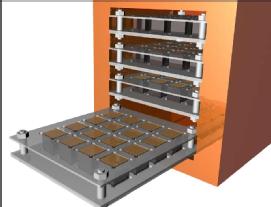Theory
General Overview
Of the species of particles currently known to physics, the neutrinos, which are produced naturally in radioactive decays, are probably among the most intriguing, but least understood. The neutrinos are exceedingly light, and interact with matter only very weakly. They come in three types, or "flavours": electron-, muon-, and tau-type. Neutrinos are also naturally produced copiously in the sun, and in reactions of "cosmic rays" with the Earth's upper atmosphere. Experiments to detect these neutrinos find fewer neutrinos than are known to be produced at source. Physicists believe that these "missing" neutrinos change or "oscillate" into one or more of the other types of neutrino, that are not detected in the experiments. These oscillations can only occur if neutrinos have mass, and mapping such oscillations in experiments has enabled the differences between neutrino masses(-squared) to be determined, but can never reveal their absolute mass scale.
For every species of particle known to physics, there is a corresponding species of anti-particle. If the particles are electrically charged, then the anti-particles carry the opposite sign of electric charge, and are clearly distinct. For neutral particles, such as the neutron, photon, and neutrino, this question is harder to answer. The photon is known to be its own anti-partcicle, while the neutron is known to have a distinct and distinguishable partner, the anti-neutron. For neutrinos, this is an open experimental question, which can be answered only by observing an as-yet undiscovered (except for one disputed result) type of nuclear beta decay, the so-called neutrinoless double beta decay.
In most nuclear beta decays, a neutron is transformed into a proton, with the emission of an electron and an electron-antineutrino. However, in certain cases, if the neutrino is its own anti-particle, it is possible for two neutrons each to transform into a proton, with the emission of two electrons, while the normally-expected two electron anti-neutrinos annihilate each other inside the nucleus (which can only happen if the anti-neutrino is indistinguishable from the neutrino). Moreover, if this neutrinoless double beta decay takes place, its rate will be governed by the neutrino mass, which will therefore be determined once the rate is measured.
Such decays, if they take place at all, are exceedingly rare, and can be observed only using a detector which is capable of discriminating them from other, more mundane sources of charged particles, such as random coincidences of single beta decays and other naturally occuring sources of charged particles, which are collectively termed "background". The proposed project aims to create a low-background environment for the COBRA experiment, a UK-led project to search for neutrinoless double beta decay. At the heart of the experiment will be a large array of semiconductor detectors made from CdZnTe. The decays that we are looking for would happen directly inside the detectors. The proposed project, forms an essential part of the experiment.
The standard method used to protect detectors from external sources of background is to surround them with passive shielding composed of materials that have specific properties for removing each background source. However, it is nearly impossible to remove intrinsic background sources within the shielding material itself (caused by construction methods and natural content). The proposed method to overcome this intrinsic background (and any residual pentrating particles) is to use an active veto. This will not directly prevent unwanted particles reaching the detectors but flags their existence and their potential for interference with genuine signals. The active veto would comprise a liquid scintillator and THGEM's (thick gas electron multipliers). A liquid scintillator is a liquid substance which produces minute flashes of light every time ionizing radiation passes through it and a THGEM is a kind of light sensor. Previously, "photomultiplier tubes" were used as light sensors but they have been found to be too radioactive for our purpose. When a background count is detected, the information is recorded and subsequently used to remove the impostor from the true signal data. The idea is to place the crystals within the scintillator liquid for optimal performance.
Whilst the proposed research is aimed directly at the COBRA experiment and its scientific goals, the knowledge acquired along the way in developing and understanding new technologies will be of utmost importance to industry and in turn, to society in general. The advances made in technology will have the advantage of allowing technology and knowledge transfer for industrial purposes. For example, CdZnTe has a number of medical applications while THGEM's may have numerous applications as alternative to PMTs within the defense, healthcare and science industries.

